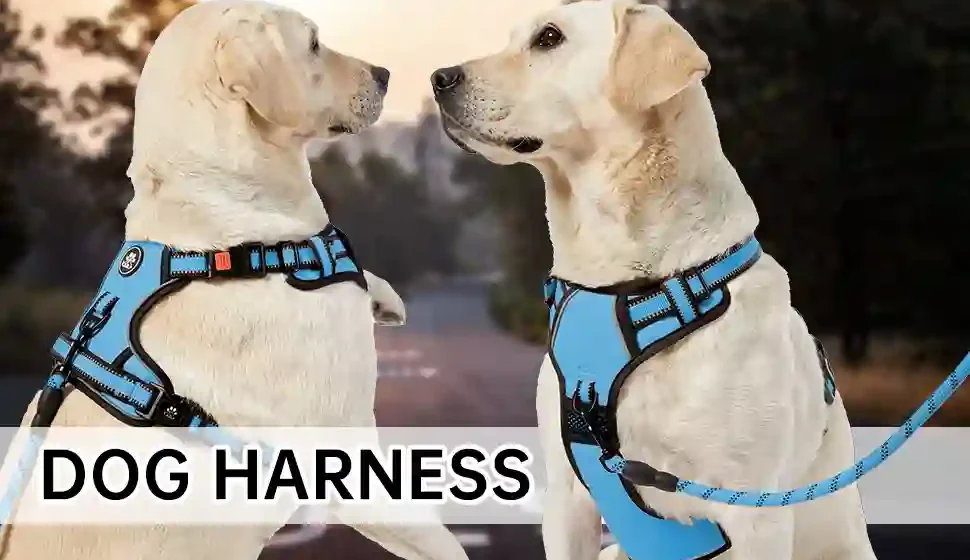The relationship between humans and dogs is a tale as old as time. Over thousands of years, this bond has evolved, with dogs becoming not just companions but integral parts of human life and work. A significant aspect of this evolving relationship is the development and use of dog harnesses. From primitive ropes to sophisticated, ergonomically designed gear, the history of dog harnesses is a fascinating journey that mirrors the progression of human ingenuity and deepening understanding of canine needs and welfare.
Early Beginnings: The Era of Ropes and Straps
The earliest known harnesses were rudimentary, made from materials like ropes, vines, and animal hide. These were primarily used to control and protect dogs during hunting or for carrying loads. Ancient civilizations, such as the Egyptians, Greeks, and Romans, used dogs for various purposes, including warfare, and the harnesses from these times were designed for functionality over comfort.
The Middle Ages: Utility and Control
During the Middle Ages, dogs continued to be valuable in various forms of work, including herding, guarding, and pulling carts. Harnesses in this era were made from leather and other tough materials. They were primarily designed to control powerful dogs and often included metal components for added strength. Comfort was still a secondary consideration, with the primary focus being on durability and control.
The 17th and 18th Centuries: The Rise of Decorative Harnesses
With the rise of dog breeding for aesthetic rather than purely functional purposes, particularly among the aristocracy, harnesses also began to be seen as objects of decoration. The 17th and 18th centuries saw the introduction of ornate harnesses, often embellished with jewels, embroidery, and fine fabrics. These harnesses were a symbol of status and were used on dogs accompanying their affluent owners in social settings.
The 19th Century: Industrialization and Innovation
The 19th century brought about significant changes with the Industrial Revolution. New materials like rubber and metal fasteners became available, leading to more durable and adjustable harnesses. This era also saw the rise of humanitarian movements that advocated for animal welfare, prompting a shift towards designing more comfortable and humane harnesses.
The Early 20th Century: Practicality and Comfort
With the advent of the 20th century, the focus on dog harness design began to shift significantly towards comfort and practicality. This period saw the introduction of padded harnesses, which provided better weight distribution and reduced strain on the dog’s body. The use of dogs in World Wars also led to the development of specialized harnesses for military purposes, including parachuting and carrying equipment.
The Late 20th Century: Technological Advancements and Specialization
The latter half of the 20th century was marked by technological advancements and a deeper understanding of canine anatomy and behavior. This period saw the development of harnesses that were specifically designed for various purposes, such as pulling sleds, assisting disabled individuals, and aiding in search and rescue operations. Materials like nylon and neoprene, which were lightweight and resistant to weather and wear, became popular.
The 21st Century: Ergonomics and Personalization
Today, the design of dog harnesses is more sophisticated than ever. Modern harnesses are the culmination of centuries of evolution, focusing on ergonomics, safety, and personalization. They are designed with a deep understanding of canine anatomy, ensuring that pressure is evenly distributed to prevent injury and maximize comfort. Reflective materials for safety, breathable fabrics for comfort, and adjustable straps for a custom fit are standard features.
The Future of Dog Harnesses
The future of dog harnesses looks even more promising, with potential advancements like smart harnesses equipped with GPS and health monitoring capabilities. Biodegradable and eco-friendly materials are also becoming more prevalent, reflecting a growing commitment to sustainability.
Conclusion: The evolution of dog harnesses is a mirror to human progress, reflecting our changing relationship with dogs, technological advancements, and a growing emphasis on animal welfare. From simple ropes to multifunctional, comfortable gear, dog harnesses have come a long way. They are no longer just tools for control but symbols of our care, respect, and love for our canine companions. As we continue to innovate and improve these essential accessories, we not only enhance the lives of our dogs but also strengthen the bond we share with them.



Leave a Reply